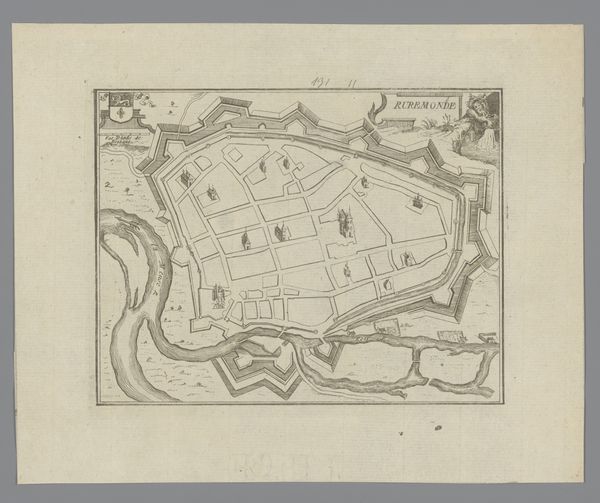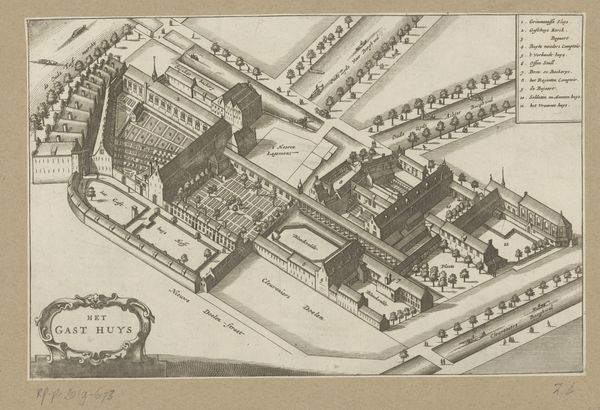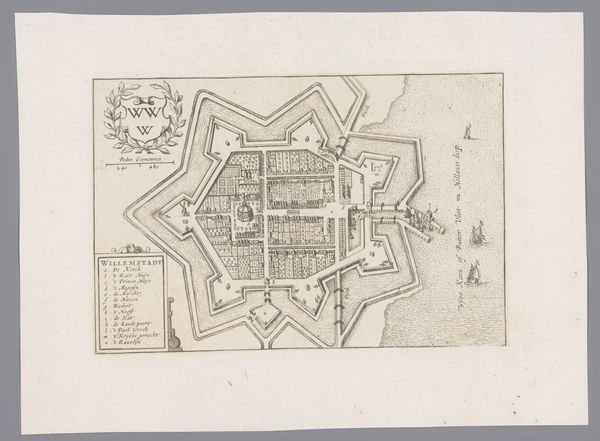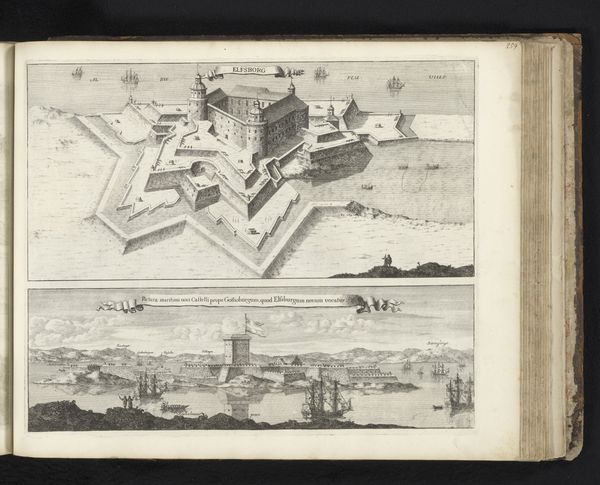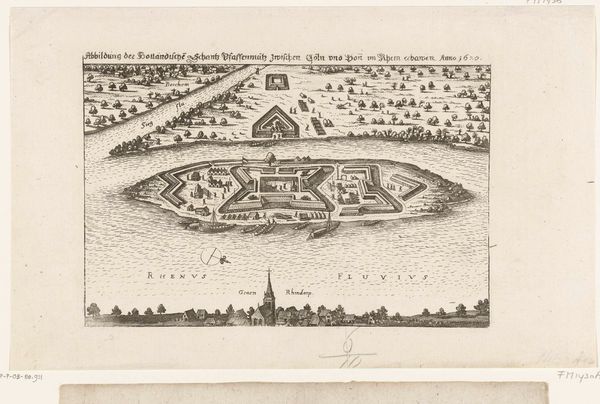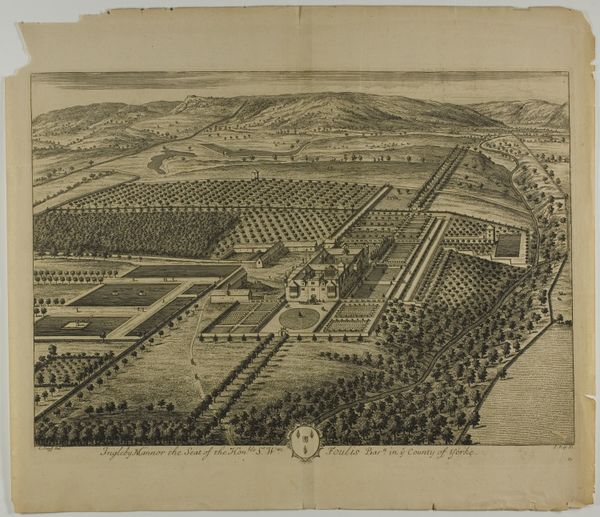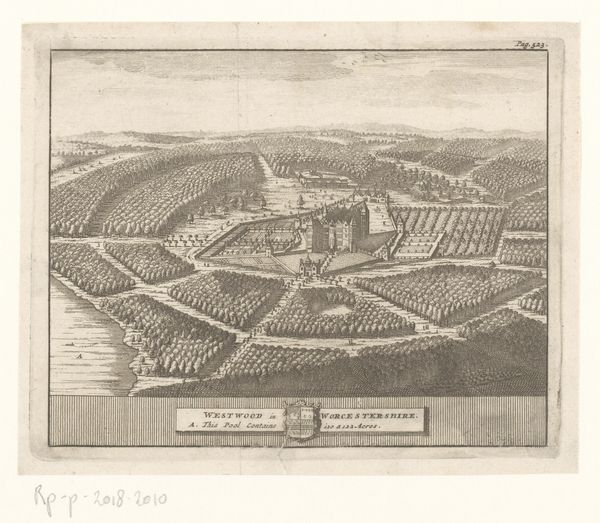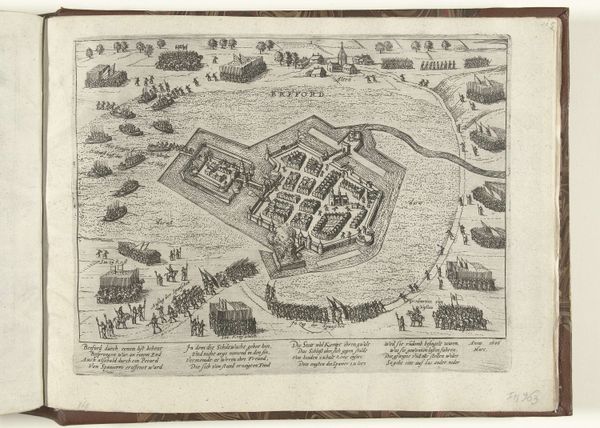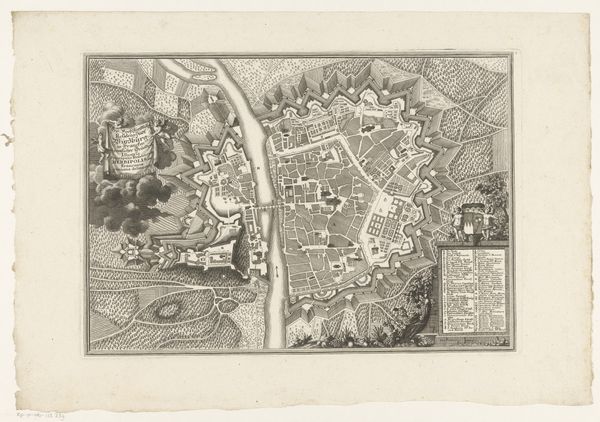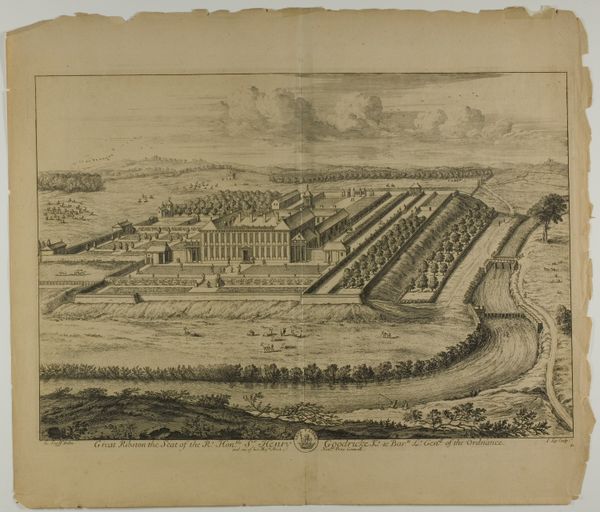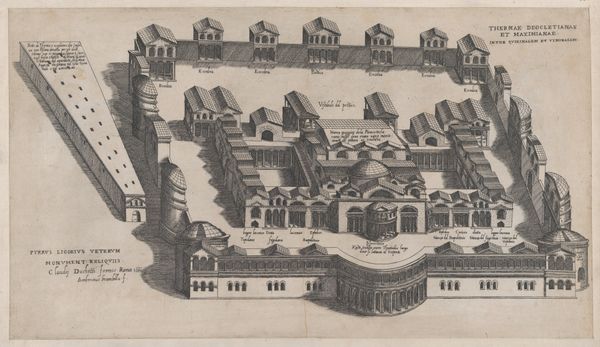
Speculum Romanae Magnificentiae: Birdseye View of the Port of Rome 1554
0:00
0:00
drawing, print, etching, architecture
#
drawing
# print
#
etching
#
11_renaissance
#
cityscape
#
italian-renaissance
#
architecture
Dimensions: sheet: 15 9/16 x 26 15/16 in. (39.5 x 68.5 cm) mount: 22 1/8 x 33 5/8 in. (56.2 x 85.4 cm)
Copyright: Public Domain
Curator: Giulio de Musi's "Speculum Romanae Magnificentiae: Birdseye View of the Port of Rome," created in 1554, is a remarkable print, specifically an etching, which resides in the Metropolitan Museum of Art. Editor: This feels so... meticulous! A portrait of precision. Almost like gazing into the past through an architect's lens, but colder, maybe? I'm feeling some serious architectural rigidity. Curator: Indeed. The strength of the etching lies precisely in its ability to meticulously delineate the urban infrastructure and maritime activity of the port. The stark lines contribute to its representational clarity. Editor: Yes! But at the same time, the sheer amount of detail almost feels… overwhelming. Does it ever feel like these old prints were more about showing off how much you *could* include rather than, like, saying something? Curator: I see your point. However, to see it solely as "showing off" would be an oversimplification. This density of detail is key. De Musi meticulously presents us with an image where form reflects function, each element, line and angle carefully considered for historical recording and its role within the port city. Editor: Recordkeeping as art… I can dig it. Still, I find myself craving a splash of something unexpected. Maybe a little shadow, something to break up all those relentless right angles. Curator: Ah, but that’s the point! Shadow, texture, those are deviations from the central intention, from its raison d'être. Its stark linearity helps provide this lucid portrait of order, a very clear understanding of that ancient world’s aspirations. Editor: Okay, order is interesting. Still, if it were up to me, I might smuggle in a rogue seagull or a mischievous splash of light—something to throw a wrench in all this calculated beauty. Curator: Ha! While I admire your rebellious spirit, such additions would fundamentally alter the nature of the print. This is an architectural record; it aims for the kind of unemotional perspective that a map offers. Editor: Fair enough, fair enough. Still, I appreciate that even in something so deliberately composed, there's room for us to find our own feelings reflected. Curator: Absolutely. By examining form and the meticulous technique, one begins to grasp the essence of not just the artwork itself, but the cultural aspirations and the sheer ambition behind Rome.
Comments
No comments
Be the first to comment and join the conversation on the ultimate creative platform.


